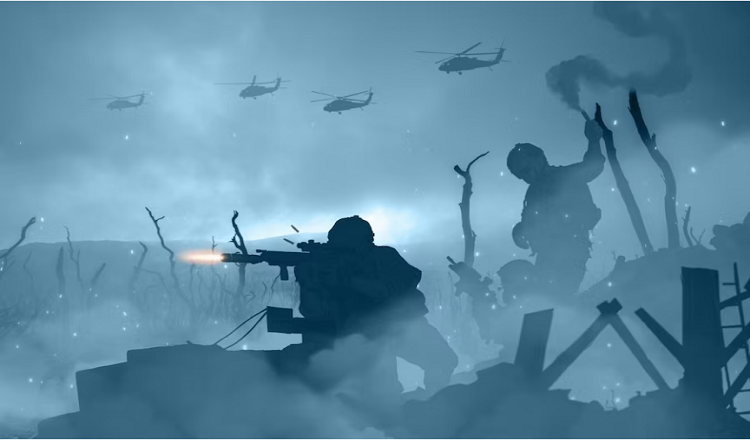The impact of modern technology on modern warfare

Warfare has always been a cruel and dangerous thing to do, but the way it looks has changed forever because of how quickly technology is improving. The United States military has used modern technology, like drones, precision-guided missiles, and cyberwarfare, to gain a decisive edge on the battlefield. But what does this change in technology mean for war in the 21st century? In this blog, we will talk about how current technology has changed war in the United States.
As we learn more about this subject, it’s important to remember that current technology has changed how wars are fought and won. With real-time intelligence, advanced targeting systems, and complex communication networks, the US military has gained skills on the battlefield that have never been seen before. But, as with any new technology, there are risks and social issues to think about. The point of this piece is to look at both the pros and cons of using modern technology in modern warfare in the United States and to show how it has changed the way we think about war. So let’s dive in and learn more about this interesting and complicated subject.
A Brief History of Modern Warfare in the United States
Modern fighting in the United States has changed a lot over time. From the early days of war with muskets to the high-tech weapons used by the military today, technology has had a huge impact on how wars are fought. When new weapons like the Gatling gun and the machine gun came out in the late 1800s and early 1900s, they changed the way wars were fought. When combat planes were invented in the 20th century, they made it possible to fight wars from the air. This changed the way wars are fought even more.
You can’t say enough about how important technology has been in the development of modern fighting in the United States. It has not only made new weapons and strategies possible, but it has also changed how fights are fought and won. For example, GPS technology has made it possible to target enemy forces and infrastructure with more accuracy, and cyber warfare has given the US military new ways to attack and protect itself against threats. As time goes on, we can be sure that technology will continue to be a key part of how modern fighting in the US changes.
How modern technology is used in war in the United States right now
The United States is at the forefront of innovation and growth when it comes to war technology. The military has put a lot of money into developing new technologies like unmanned aerial vehicles (UAVs), artificial intelligence (AI), and advanced cyber warfare skills. With these technologies, the US military can run operations that are more precise and efficient while putting fewer people in danger.
Drones are one example of how current technology is used in war. UAVs can gather information in real time and hit enemy targets with pinpoint accuracy. AI is another example. It has changed how the military processes and analyses huge amounts of data so that choices can be made faster and with more information. Cyberwarfare skills are also becoming more important in modern warfare, as the military tries to protect itself from cyberattacks and launch its own cyberattacks. Overall, the US military’s use of modern technology is always getting better and pushing the limits of what can be done on the ground.
Advantages of using modern technology in US wars
The US military has gotten many benefits from modern technology, which has made it much more successful on the battlefield. One of the biggest benefits is precision aiming, which lets the military hit specific targets with accuracy while causing as little damage as possible to other areas. This is possible because of the development of advanced guided weapons and the use of surveillance and reconnaissance tools to get information in real time.
Modern technology also makes it easy to share and analyse huge amounts of data quickly. This helps military commanders get a more full picture of what’s going on on the battlefield. This is possible because information networks and tools for looking at data have gotten better over time. Also, technologies like unmanned aerial vehicles (UAVs) and advanced robots have made it safer for people and made it easier for the military to do its work.
Overall, the benefits of current technology in US warfare have made it much easier for the military to carry out operations with speed, accuracy, and efficiency.
The pros and cons of using modern technology in war in the United States
The US military has gotten a lot of benefits from modern technology, but it also comes with its own challenges and risks. One of the biggest problems is that technology can fail or act up during important activities. This can have very bad results, as we saw in the 1991 Gulf War, when several friendly fire events were caused by technical problems.
Cyber attacks on military systems are another risk that comes with the use of current technology in war. As the military depends more and more on technology, cyber threats from both state and non-state players become more likely. If a cyber attack on military systems works, sensitive data could be stolen or important military actions could be stopped.
Also, it’s important to think about the moral effects of using modern technology in war. For example, the use of unmanned aerial vehicles (UAVs) has raised worries about civilian deaths and the possibility of breaking international laws of war.
Overall, modern technology has given the military a lot of benefits, but it is important to be aware of the possible risks and problems that come with using it in war in the United States.
Ethics and the law of using modern technology in war in the United States
When the United States uses modern technology in war, there are many moral and legal issues that must be thought about. One of the biggest worries is the possibility of civilian deaths, which can happen if the targets aren’t chosen carefully or if explosive weapons are used in crowded places. This raises moral questions about the military’s duty to keep civilians as safe as possible during missions.
Also, using modern technology in war must follow international law, such as the rules of war and the Geneva Conventions. If you break these rules, you could get in trouble with the police and hurt the military’s reputation.
Also, when the military uses current technology, like unmanned aerial vehicles (UAVs) to carry out strikes, there may be moral questions to answer. This makes me wonder about the duty of each soldier and whether they have to follow moral and ethical rules in battle.
Overall, moral and legal issues are very important when the US military uses modern technology in war, and military leaders must make sure they are taking all the steps they need to follow international law and keep people as safe as possible.
How the USA will use modern technology in war in the future
In the future of modern technology in war in the United States, advanced technologies are expected to continue to be made and used. Artificial intelligence (AI) is a new technology that has a lot of promise. It could be used to improve how decisions are made and make systems more self-sufficient.
Nanotechnology, directed energy weapons, and hypersonic weapons are also new technologies that could have a big effect on the future of war. Nanotechnology could make it possible to make better materials and sensors, and directed energy weapons and hypersonic weapons could change the way that armed forces fight.
Also, advanced tools for communication and data processing will likely continue to be very important in modern war. This will give military leaders more information so they can make better decisions and act faster when things change on the battlefield.
Overall, the future of modern technology in warfare in the United States is likely to involve more innovation and the use of new technologies. This will have big effects on how military activities are run.
Conclusion
In conclusion, modern technology has had a big effect on modern fighting in the United States. This has both pros and cons. In the history of modern warfare in the United States, new technologies have been constantly added, making military activities more efficient and effective. Modern technology has made the US military more successful by giving them big advantages like pinpoint targeting and real-time intelligence. But using modern technology in war comes with its own challenges and risks, such as the chance of technology failing, hacking attacks, and moral questions.
It is important for military leaders to stay alert and think about how using current technology in war affects morality and the law. As new technologies like AI, nanotechnology, and directed energy weapons continue to improve, they will continue to change the future of modern warfare in the United States.
In conclusion, modern technology has a lot of benefits, but it is important for military leaders to think carefully about the possible risks and ethical issues to make sure that everyone involved in modern warfare in the United States is safe and secure.
Read More You May Like:
- Investigating the aftermath of war and peacebuilding efforts
- How war can result in severe humanitarian crises
- How social media shapes public perception on war and conflict
- Examining the root causes of recent conflicts around the world
- Examining the psychological effects of war on soldiers








